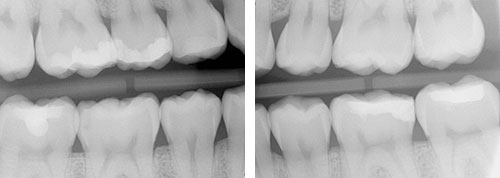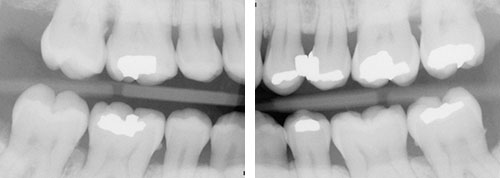ORAL CANCER
I can remember being trained, over 20 years ago as a dental student, about how important that it was for us to perform an oral cancer exam at least once a year. Since then, oral cancer has consistently increased in frequency. Two factors have contributed to this. First, the baby boomer population is adding to the volume and frequency as they age and approach the most common age group to be diagnosed with oral cancer. Second, the spread of the Human Papilloma Virus (HPV), specifically HPV16 has significantly increased over the past 20 years. This has affected younger generations that were typically at low risk to develop oral cancer, and is a growing concern. It has also increased the cancer rate in all age groups of people who do not smoke or drink alcohol.
Oral Cancer Facts
The Oral Cancer Foundation states that close to 43,250 Americans will be diagnosed with oral or pharyngeal cancer this year. It will cause over 8,000 deaths, killing roughly 1 person per hour, 24 hours per day. Of those 43,250 newly diagnosed individuals, only slightly more than half will be alive in 5 years. Oral cancer death rates are higher than that of cancers which we hear about routinely such as cervical cancer, Hodgkin’s lymphoma, laryngeal cancer, cancer of the testes, and endocrine system.
Oral cancer can be difficult to diagnose, and often times, is well established before it is diagnosed and treated. It can be very difficult to view oral cancer during a routine screening, especially if it in the back of the mouth, which is where it is most often found with HPV16. The Oral Cancer Foundation also states that oral cancer is particularly dangerous because in its early stages:
- It may not be noticed by the patient.
- It can frequently prosper without producing pain or symptoms they might readily recognize.
- It has a high risk of producing second, primary tumors.
Risk Factors for Oral Cancer
Age has historically been a risk factor, as there is a time component associated with the biochemical or biophysical processes of aging cells that may lead to increased malignant transformation, or the immune system simply not working as well as it used to. This age factor, unfortunately, is changing due to the HPV16 virus.
Tobacco, both smoke and smokeless (chewing forms). This is caused by chemicals that are in the tobacco that are cancer causing agents, which continually expose the tissues to harmful chemicals. Although lung cancer seems to be decreased from smokeless tobacco, oral cancer is increased with its use over smoking, as it has a higher concentration of carcinogens.
Alcohol use, for the same reason as tobacco. The combination of alcohol and tobacco together acts synergistically, increasing the chance of getting oral cancer significantly over just using one or the other.
Human Papilloma Virus (HPV16) The most increase in oral cancer rates recently have been related to the spread of the HPV16. Unfortunately, this is causing oral cancer across more age groups and non-tobacco/non-alcohol user
Possible Signs and Symptoms The Oral Cancer Foundation states that one of the real dangers of this cancer, is that in its early stages, it can go unnoticed. It can be painless, and little in the way of physical changes may be obvious. The good news however, it that your physician or dentist can, in many cases, see or feel subtle tissue changes, or the actual cancer while it is still very small or beginning stages. It may appear as a white or red patch of tissue in the mouth, or a small ulcer which looks like a common canker sore. Because there are so many benign (non-cancerous) tissue changes that occur normally in your mouth, and some things as simple as a bite on the inside of your cheek may mimic the look of a dangerous tissue change, it is important to have any sore or discolored area of your mouth, which does not heal within 14 days, looked at by a professional. Other symptoms include: a lump or mass which can be felt inside the mouth or neck, pain or difficulty in swallowing, speaking or chewing, any wart like masses, hoarseness which lasts for a long time, or any numbness in the oral/facial region. A persistent ear ache can also be a warning sign.
What can I do to Prevent Oral Cancer? No one is totally immune to getting oral cancer, but certainly, not smoking, not chewing tobacco and/or drinking is still the best way to decrease your chances of getting oral cancer. Research is still being done on the effectiveness of the HPV vaccine in reducing the likelihood of getting HPV, therefor reducing the types of cancer associated with it.
What is the Best Defense Against Oral Cancer? Besides taking as many steps as possible to prevent getting oral cancer, the next best thing is getting routinely screened. This should be done at the minimum of once a year.
The accepted means of screening has always been visual examination and palpation or feeling tissues. However, this has been shown to be ineffective in reducing the morbidity (severity) and mortality (death) rates of oral cancer - especially oral squamous cell cancer, the most common type. FDA-approved, additional screening tests have now been developed to better visualize early abnormal cellular changes before they can be detected with unaided visual examination.

The VELscope (Visually Enhanced Lesion scope) is a device that uses tissue autofluorescence in a noninvasive technique to demonstrate the presence of premalignant or malignant lesions that may not be visible to the unaided eye. There are about 44 studies supporting the use of the VELscope, which shows high accuracy and low false-negative results for the diagnosis of pre-cancerous and cancerous lesions.
What will Happen if the Dentist Discovers Something Abnormal? Typically, if something is noted, our patient is invited back in 2 weeks to evaluate if the suspicious lesion is still present. Due to the fact that many things can “mimic” cancer, a conservative approach is necessary to establish is the lesion is normal. Typically, most lesions resolve within 2 weeks. Cancer will not. If after 2 weeks, a lesion is still present, it is best to perform a brush biopsy, or to see an oral surgeon for a more definitive biopsy and differential diagnosis. Most of the time, lesions are benign and non-life threatening once identified under a microscope. However, if cancer is discovered, it proves to be extremely important that it is identified as early as possible.
What are Some Treatments for Oral Cancer? If cancer has been discovered, it is staged. Treatment is formulated to the staging of the Cancer. This is why it is vital that it is discovered early. Treatment of oral cancers is ideally a multidisciplinary approach involving the efforts of surgeons, radiation oncologists, chemotherapy oncologists, dental practitioners, nutritionists, and rehabilitation and restorative specialists. Different avenues of treatment include the use of radiation treatment, chemotherapy and/or surgery.
Both Dr. Bara and Dr. Boulard take oral cancer screening very seriously. Every time a patient has an exam performed, and oral cancer screening is done, including the use of the VELscope. This is done as a courtesy, and there is no charge to the patient for doing this.









